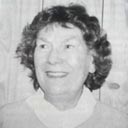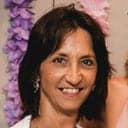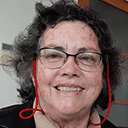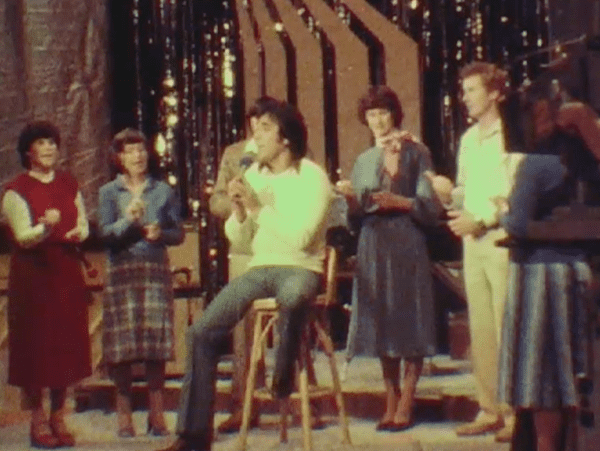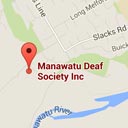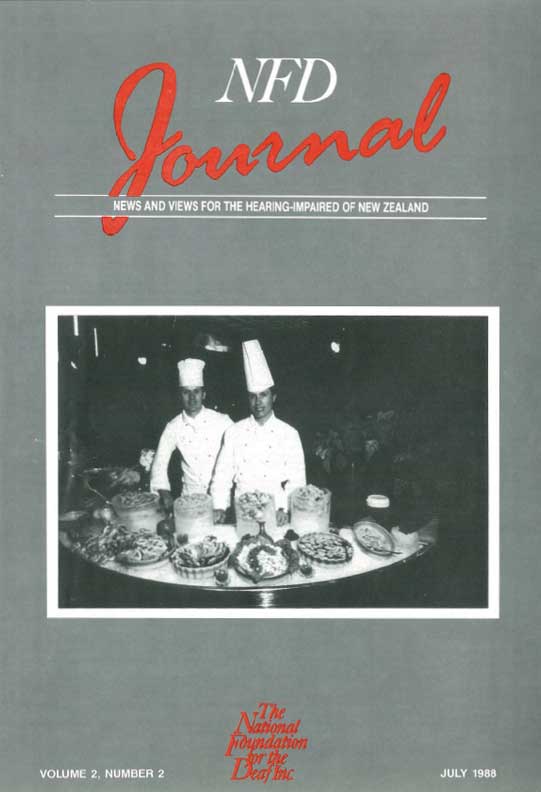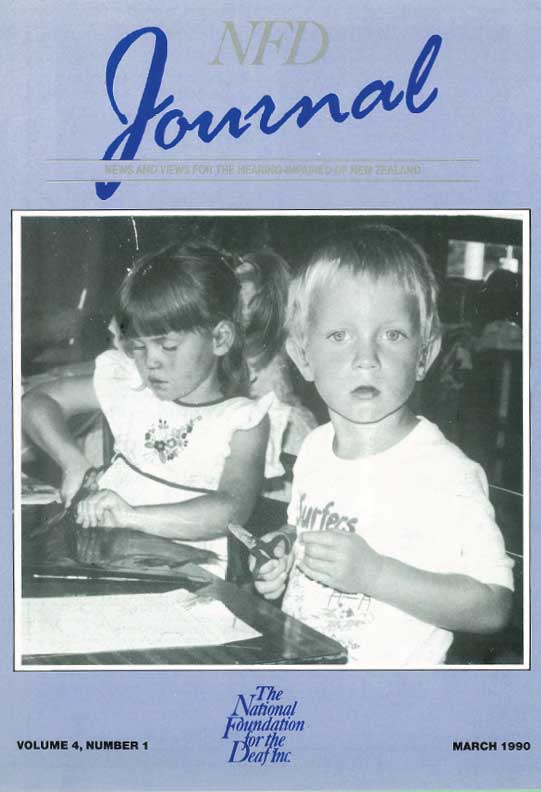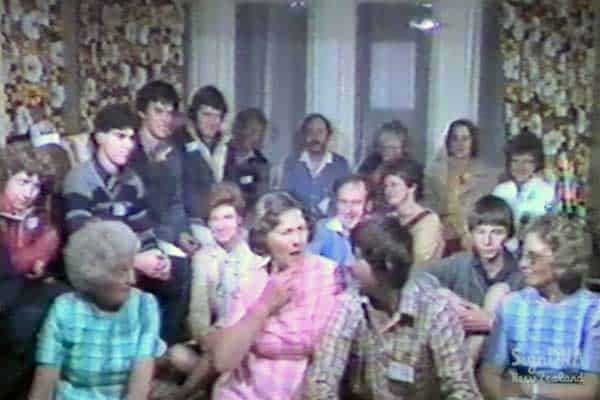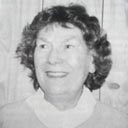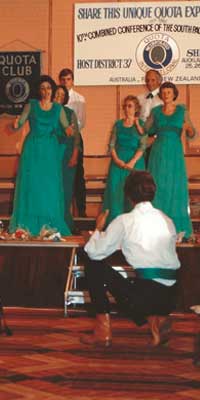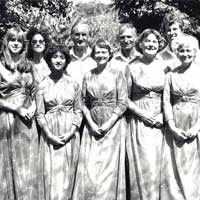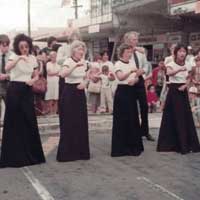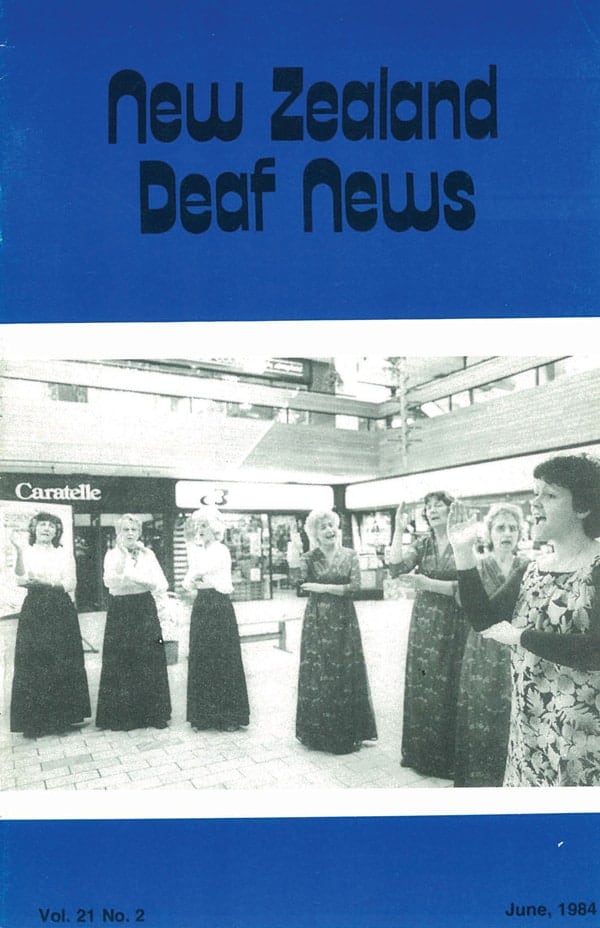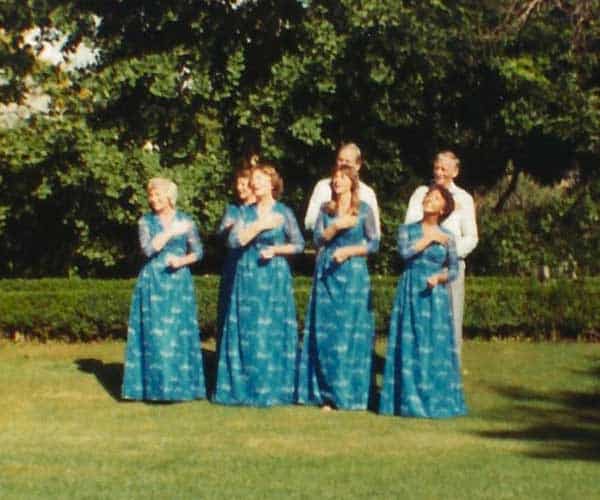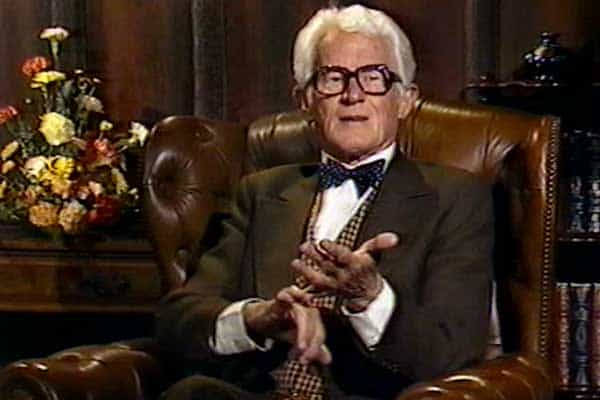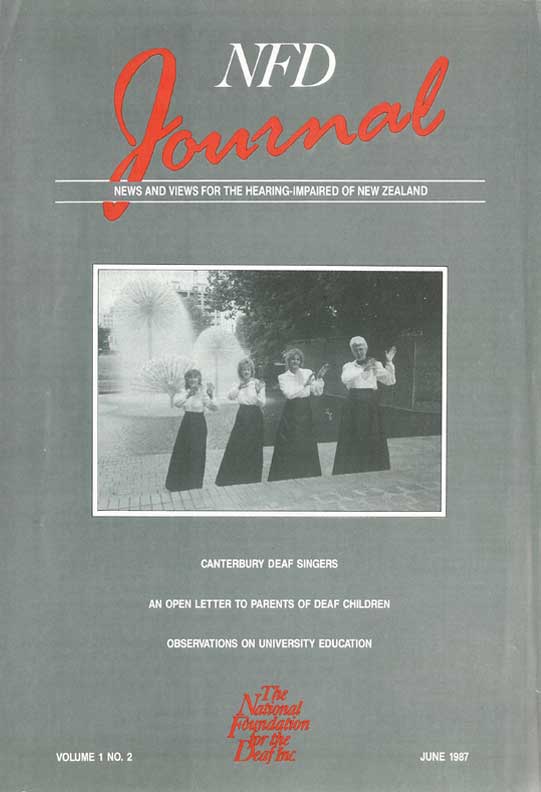Throughout the early 1980s, the New Zealand Deaf community created two sign singing supergroups: The Sign Singers from Auckland, and The Silent Singers from Christchurch. These two groups pioneered Sign Singing as an art form and gained considerable public admiration for their efforts. Both groups made appearances on national Telethon events, and the Auckland group also were regulars on the Stars on Sunday programme, making more appearances than any other single group. Sign Singing was not only great fun for the performing sign singers, but also gave the hearing population a cultural point of reference in relating to NZSL and Deaf people. It created an universal connection, and hearing people took to supporting the groups with great enjoyment during numerous appearances and tours.
- Storytelling/Performances
- Other
By Popular Demand

December 6, 1981. The Sign Singers performing at the People In Parks event, at Roundel in the Auckland Domain.

Performing for ‘Stars on Sunday’ at the Highwic on 25 February, 1982.
In 1980, a group of Deaf people put on a charity performance at Homai College, Manurewa in order to help the Manurewa Lions to raise funds. The charity concert, on September 20. Included in this performance were four mimed sketches and three songs. The sign singing part of their performance made such a big impact on the audience that it was decided that in the group’s future activities, they would call themselves the “Sign Singers”.
They quickly gained a reputation for giving rousing performances, and for their final songs audiences would be urged to sign along with the singers. This was a great way to encourage hearing people to get past the taboo of gesturing and sign sing along with the inspiring performers.
Signing Bridges to the Hearing World

6 March 1983, Mardi Gras. The Sign Singers with their hand-made paper mache hand, I LOVE YOU.
Sign Singing was not only great fun for the performing sign singers, but also gave the hearing population a cultural point of reference in relating to NZSL and Deaf people. It created a universal connection, and hearing people took to supporting the groups with great enjoyment during numerous appearances and tours between 1980 to 1990.
They performed well over 100 times in various parts of the North Island where they supported Quota International Deaf Awareness Week and performed in the main centres of the North Island. They also gave 24 performances during a Deaf Awareness Week in the South Island.
In Auckland they performed for the Governor General at the newly opened Sheraton hotel in 1981. Later they even led the parade of Auckland University’s “Mardi Grad” with a huge paper mache hand, depicting “I Love You”!
Mainstream Success

In preparation for their performances, Dulcie McKie would hand-draw the agreed signs for songs.

Saturday 24 March 1984. United Way at Government House Garden Party.
Both the Auckland and Christchurch groups had considerable success in breaking into popular media, such as being invited to perform in the 1981 and 1985 Telethons. The Sign Singers were also one of the most popular groups to appear on ‘Stars on Sunday’ – an iconic Kiwi programme in the 1980s – which they did so a record 14 times, inspiring the host to learn how to introduce them in sign language, which was a radical concept in it’s day.
Greater exposure was to come though as their popularity grew, and in 1990 the Sign Singers were invited to perform at Bastion Point for the televised Auckland New Year’s Eve Celebration, broadcast nationwide. The same year, an estimated worldwide audience of 250 million saw them perform with the hearing choirs for the opening of the Commonwealth Games in Christchurch. This is surely one of the biggest audiences for a Deaf performance of all time.
End of an Era

2 March 1986. The Sign Singers performing at the Auckland Easter Show.
Despite being fun, it was inevitably tiring work for the singers, with huge logistical planning for the tours, as well as practices for the songs themselves, not to mention the dresses which were all hand-sewn by the group, mainly by the group’s matriarch Dulcie McKie, (who even had a representative role for the combined group on the NZAD Council in 1983-84, such was their popularity and influence at the time). Eventually it was time to end the group, after a decade of extraordinary success.
Group leader Dulcie McKie reflects on the experience:
“Sadly, we had to let things go. Time and time again the Sign Singers call back memories of the wonderful times we had. Sometimes when we were tired we would just soldier on, but when we began to ‘sing’ all the tiredness just disappeared and the felling of joy was great. The good old days!
“I hope that because of our efforts the Deaf of the future will have a more understanding world in which to live and that more hearing people will involve themselves by becoming interpreters”. – Source: Talking Hands, Listening Eyes.

